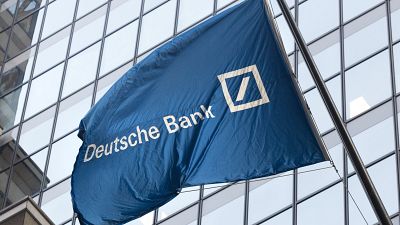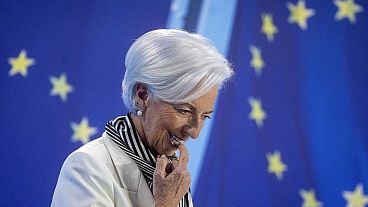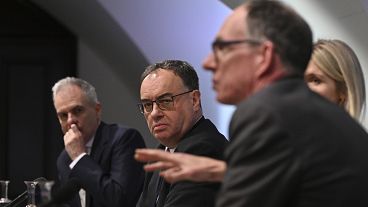France and Germany remain in the doldrums despite Spain and Italy beating economic expectations.
The eurozone economy flatlined in the last three months of 2023, according to gross domestic product (GDP) data released on Tuesday.
This stagnant figure is up 0.1% compared to the same period last year and represents a 0.1% quarterly fall.
The new GDP data looks at the output of goods and services in countries that use the euro, meaning that it can be used to measure the economic health of the bloc.
Overall, the picture isn’t rosy, although it does slightly surpass forecasts of a 0.1% decline, pencilled in by analysts for the fourth quarter.
Despite small wins seen in Spain and Italy, the eurozone’s biggest economies of Germany and France dragged back the pack.
High interest rates, low foreign demand, and geopolitical tensions are some of the key factors hampering eurozone growth, which will bring the European Central Bank (ECB) under more pressure to bring down borrowing costs.
Germany, the ‘sick man’
Europe’s biggest economy shrank by 0.3% in the final quarter of 2023, after two consecutive quarters of flat growth, bringing the annual contraction figure to 0.3%.
The downturn is driven by weak foreign demand for German goods, combined with low spending by domestic consumers.
“In 2023, Germany was the ‘sick man’ in the truest sense of the word - its economic performance was significantly more affected by the wave of illness than in other countries,” said economists Claus Michelsen and Simon Junker in a report released last week.
“What’s still true though is that Germany’s economy faces significant structural problems and is confronted with major challenges in international competition,” they added.
As is the case in other eurozone nations, high borrowing costs are squeezing German finances, but the country is also struggling with high numbers of work absences due to poor health, and a series of rail strikes.
On top of this, Germany was also hit particularly hard by the energy price spike caused by Russia’s invasion of Ukraine.
This is partly due to the nation’s strong former dependence on Russian power, as well as the reliance of the German economy on heavy industry.
France in stagnation
As was the case from July to September, France’s GDP remained unchanged in the last three months of 2023.
Growth for the whole year came in at an underwhelming 0.9%, down from 2021’s figure of 6.4%, and the 2.5% rate seen in 2022.
Inflationary pressures are clearly making themselves felt, but there is some cause for quiet celebration.
“We can see the glass half empty or the glass half full,” said Jean-Luc Tavernier, the Director-General of France’s national statistics agency, INSEE.
Speaking to France Inter on Tuesday, he commented: “after a fairly significant slowdown in 2023, we’re getting through this without a recession.”
French household consumption of goods fell by -0.1% in the final quarter of the year, although household consumption of services was up by 0.3%.
Consumer confidence is showing signs of improvement despite sitting below its long-term average.
Small wins in parts of Europe
Looking for glints of hope amongst the downbeat data, analysts are pointing to Italy and Spain.
GDP in Italy rose by 0.2% in the fourth quarter despite weak domestic demand, a result that beat expectations of 0%.
This figure is up 0.5% compared with the same period last year, thanks to a boost provided by the industrial and services sectors.
Spain’s economy also beat expectations of 0.2% quarterly growth, with GDP rising by 0.6% in the fourth quarter.
This is predominantly down to rising household consumption, although economists remain concerned about a surprise jump in inflation, which rose to 3.5% in January, compared with the previous year.



